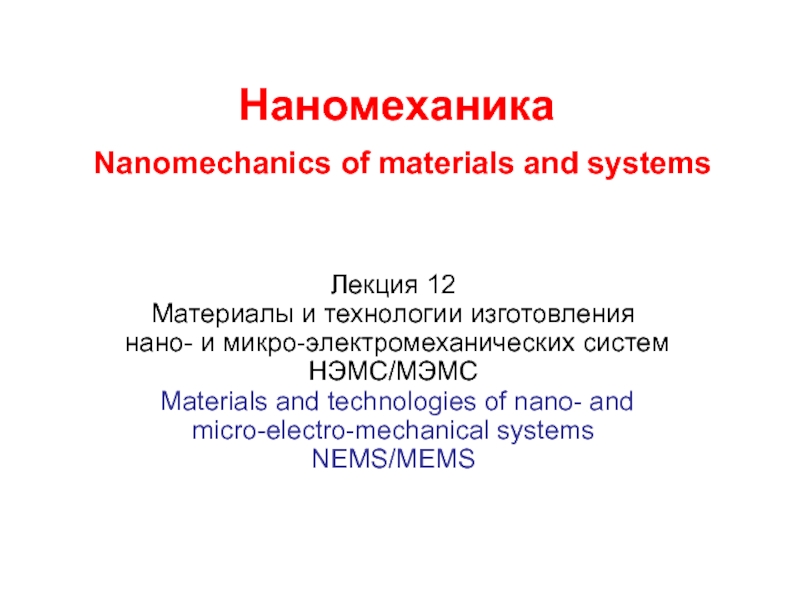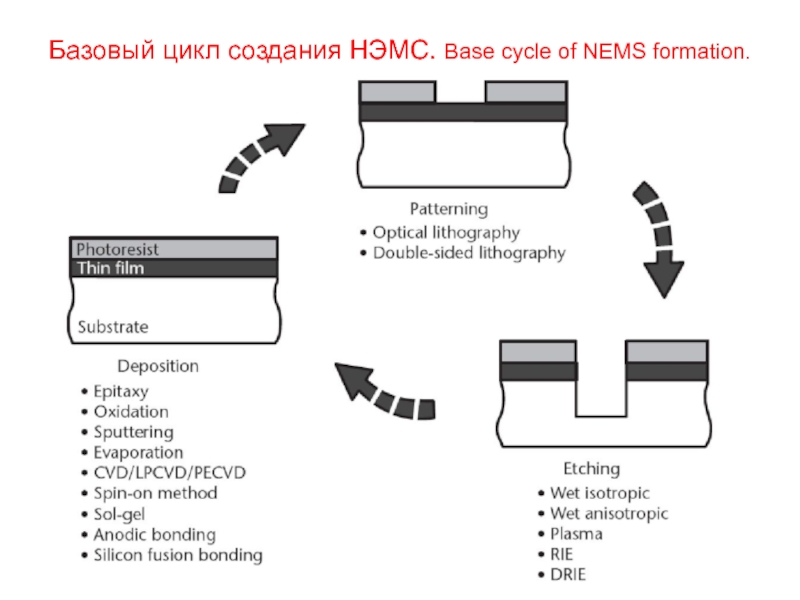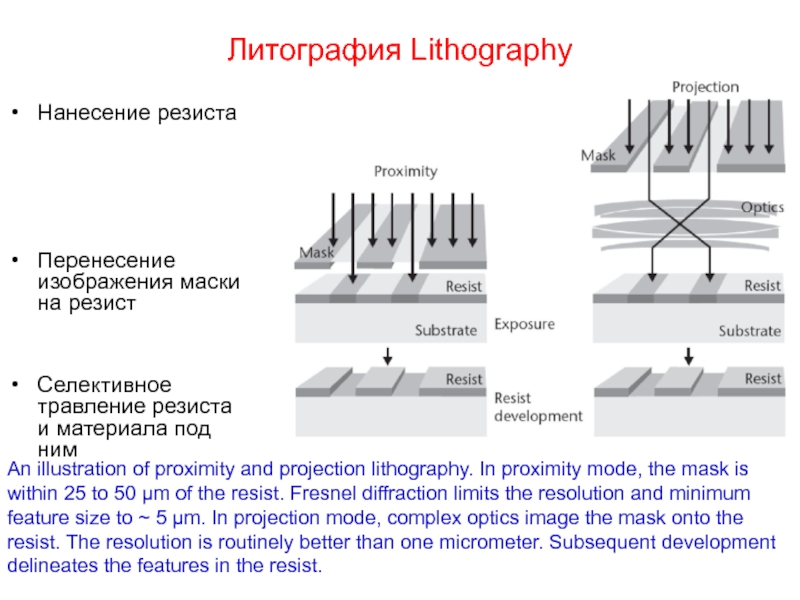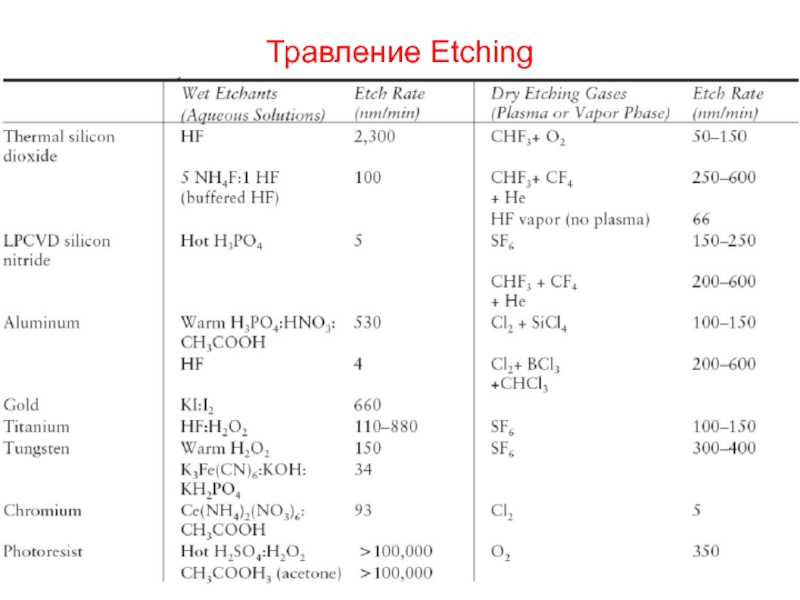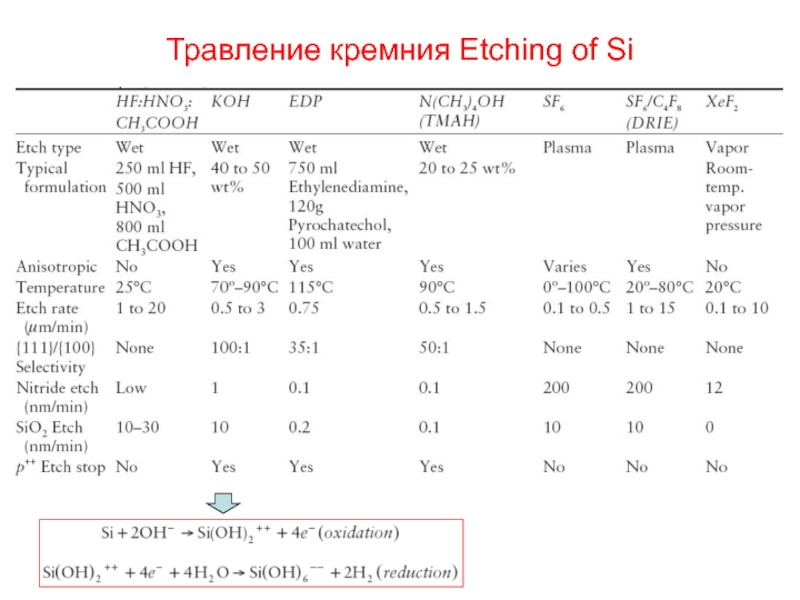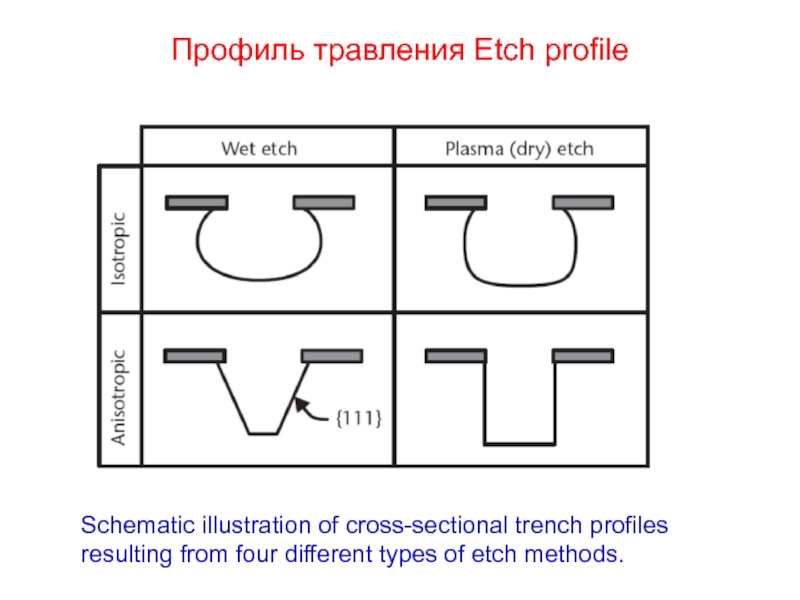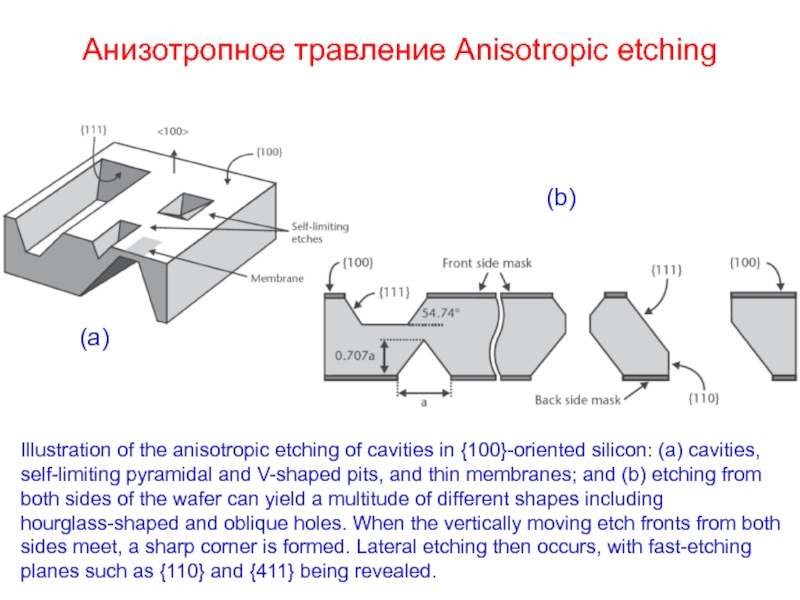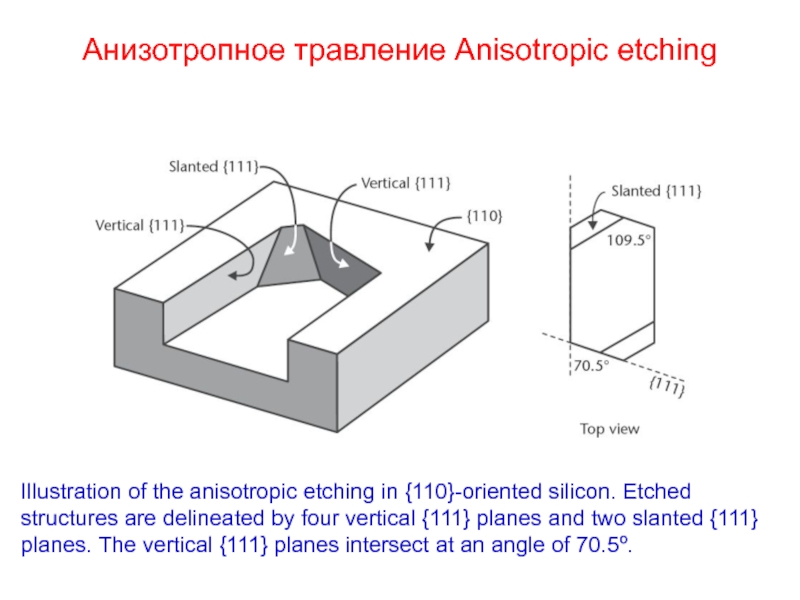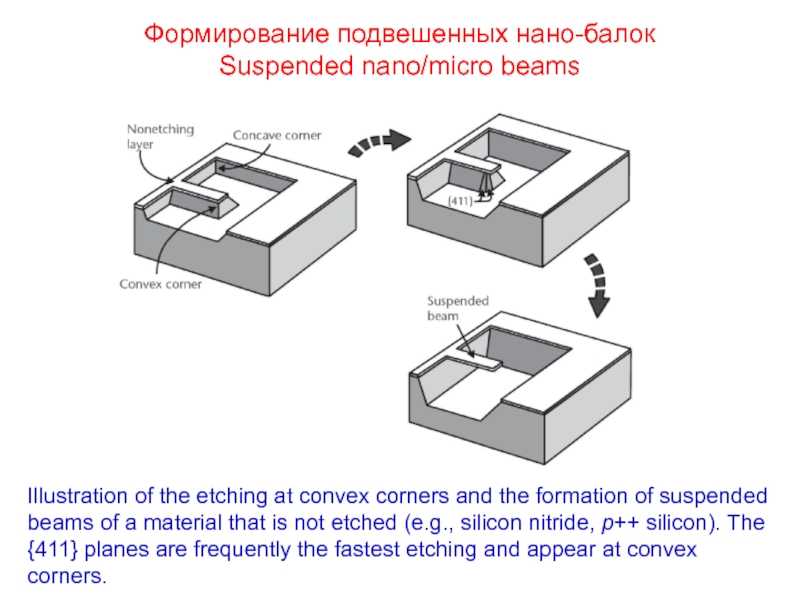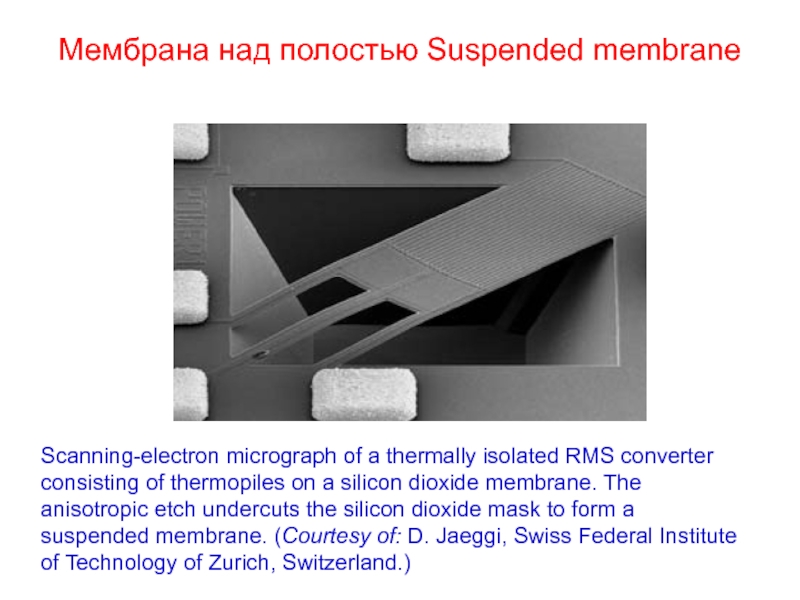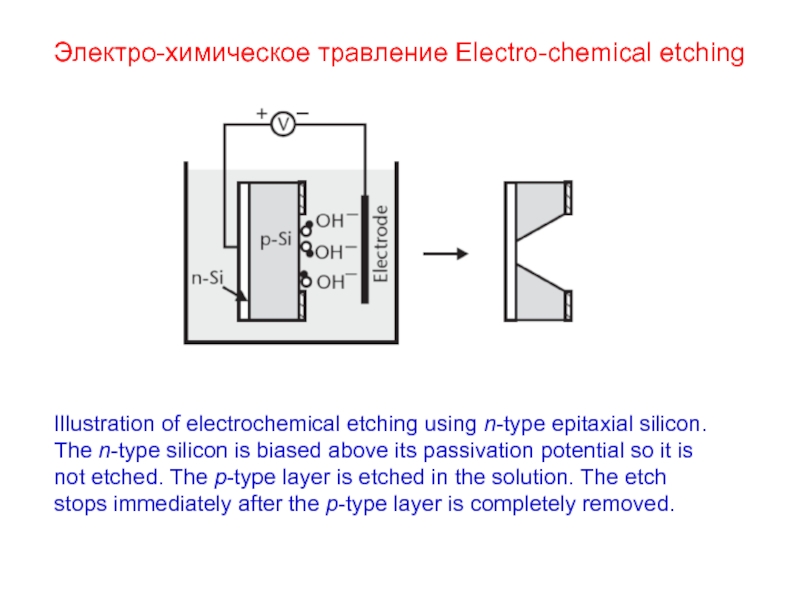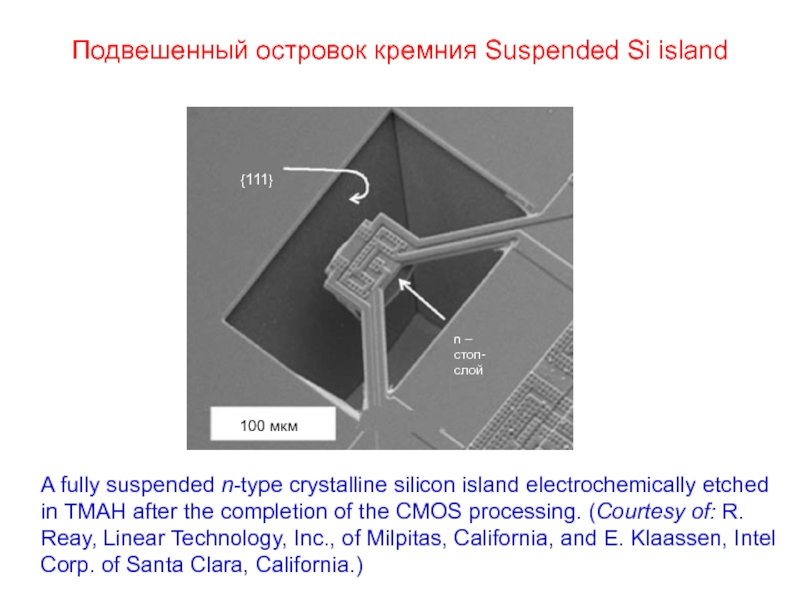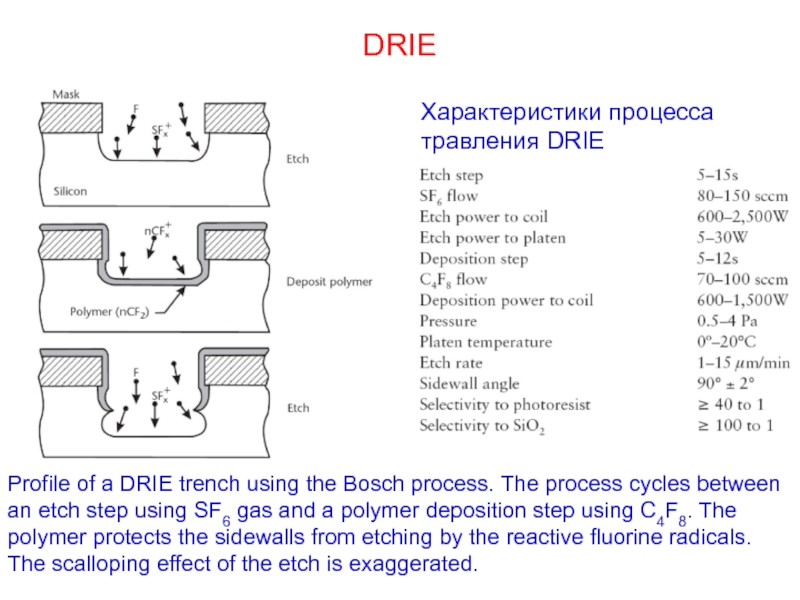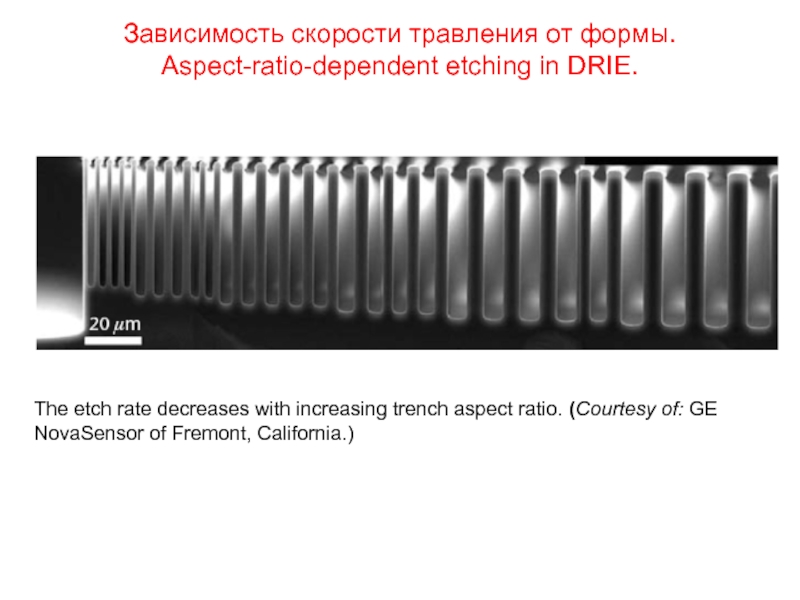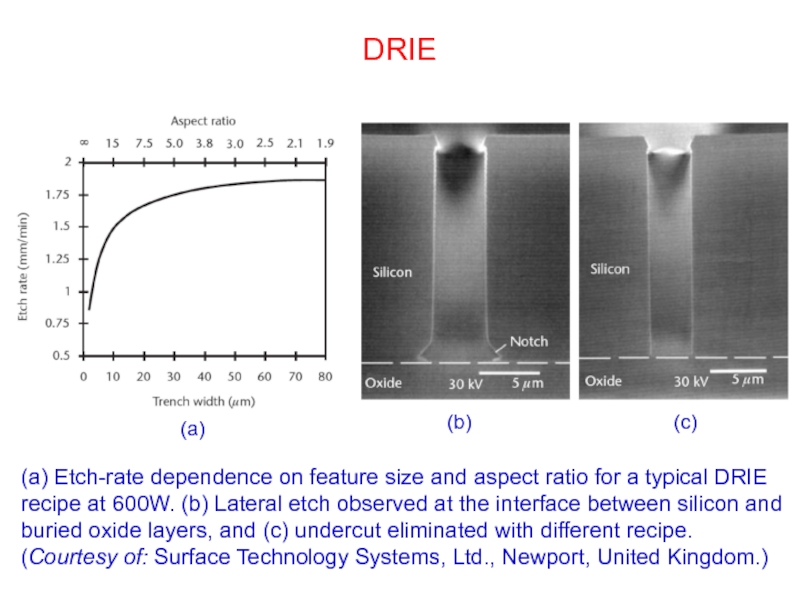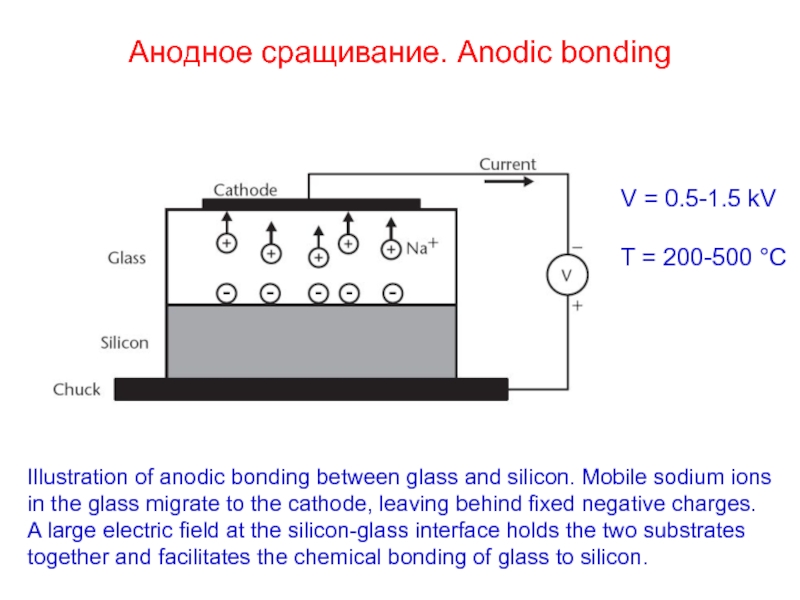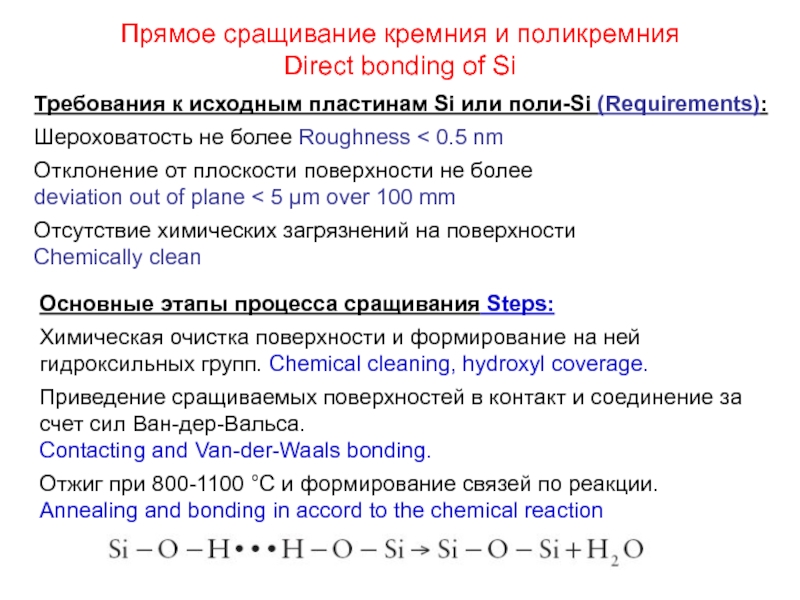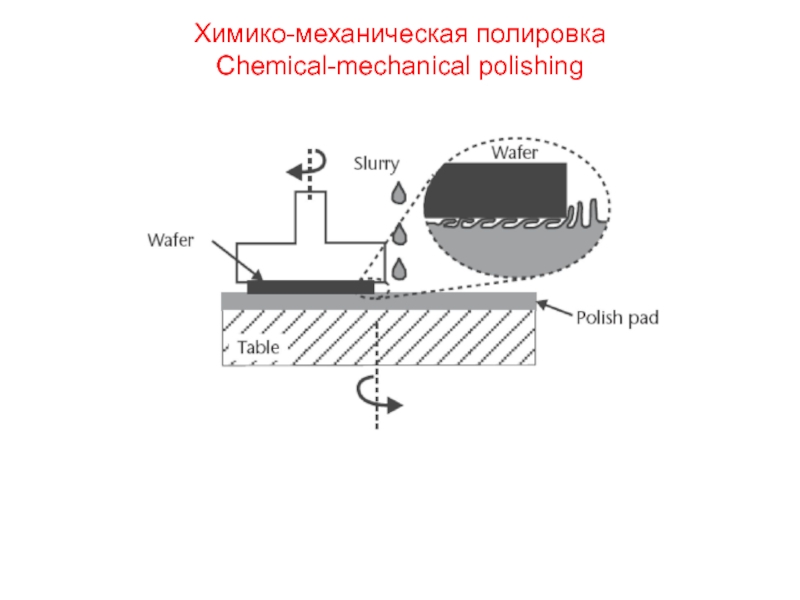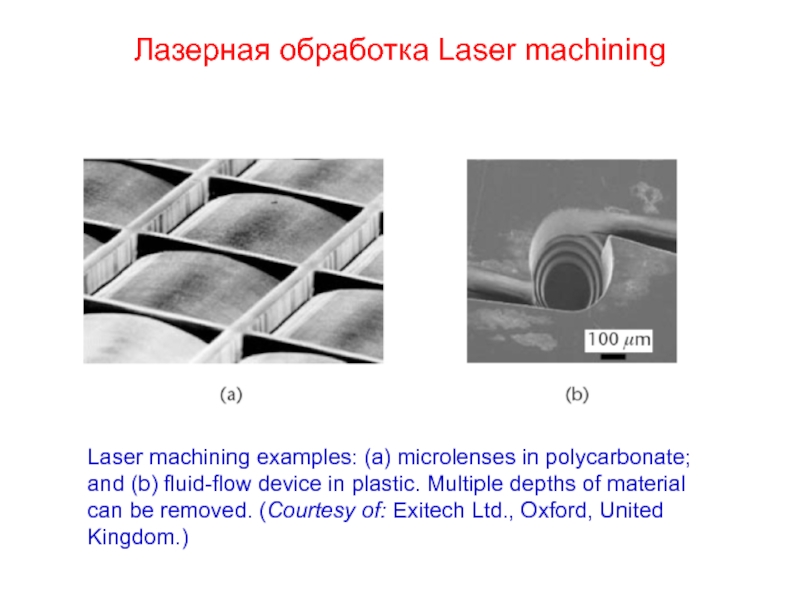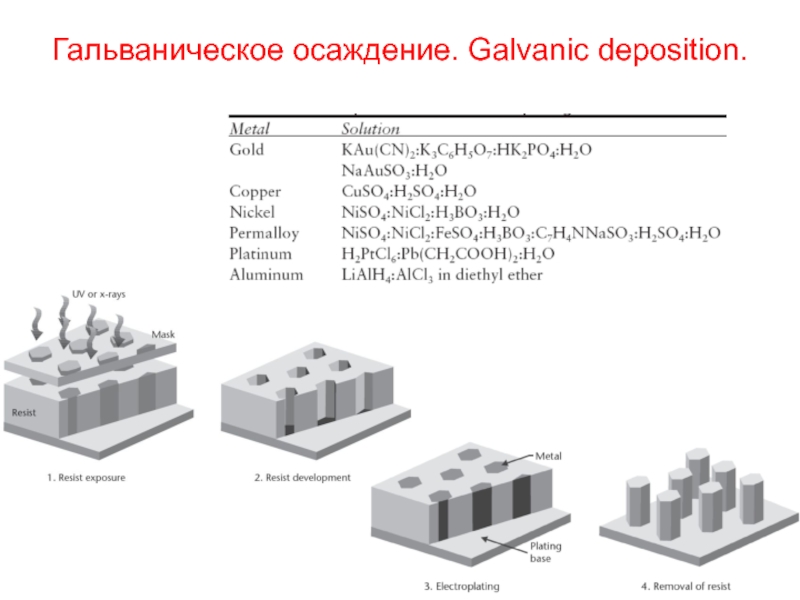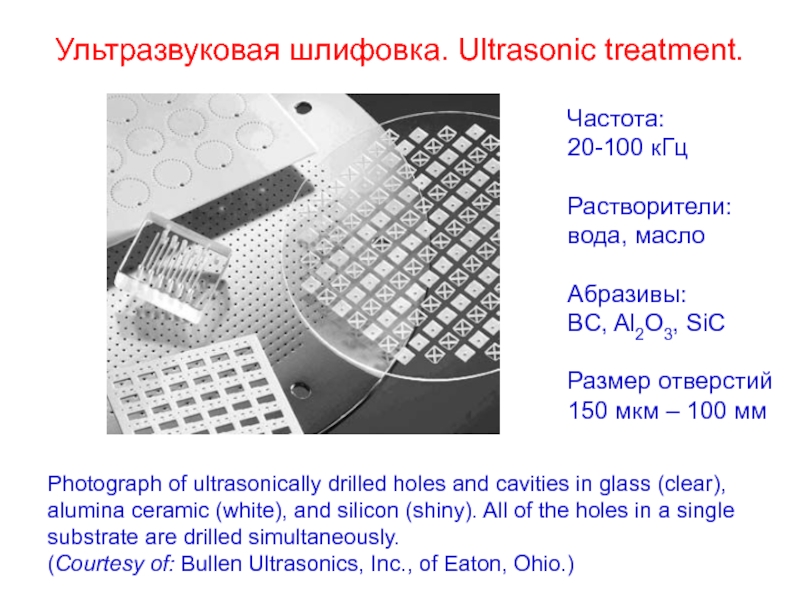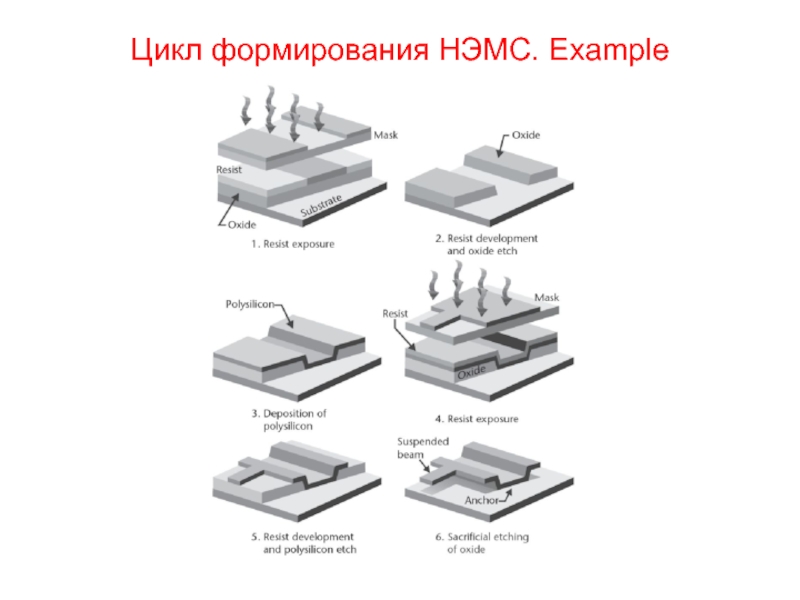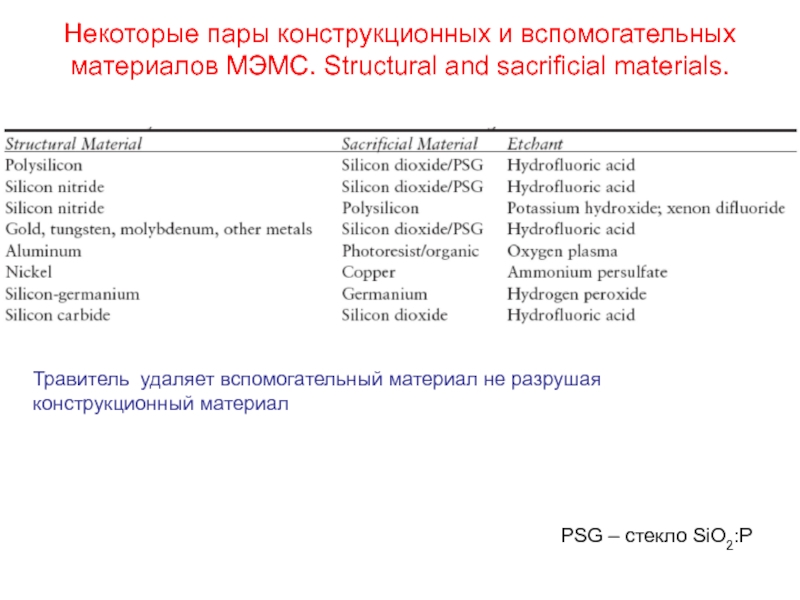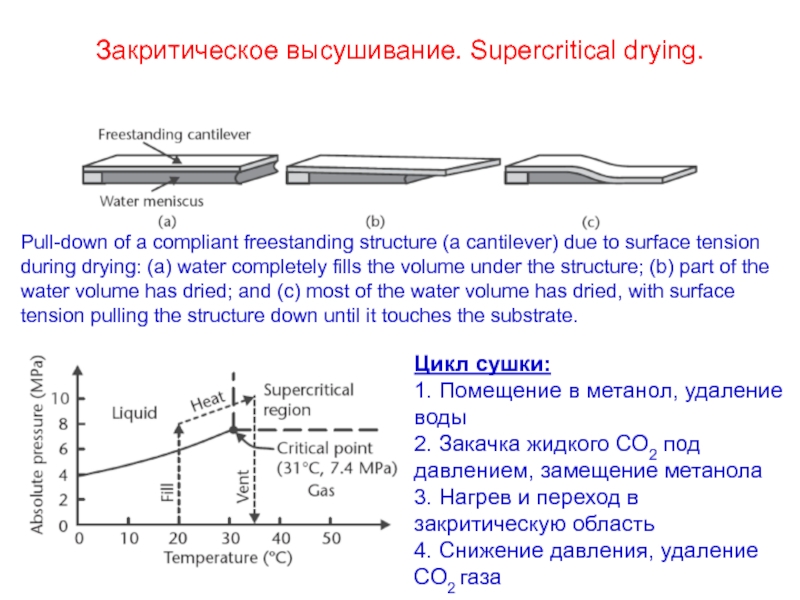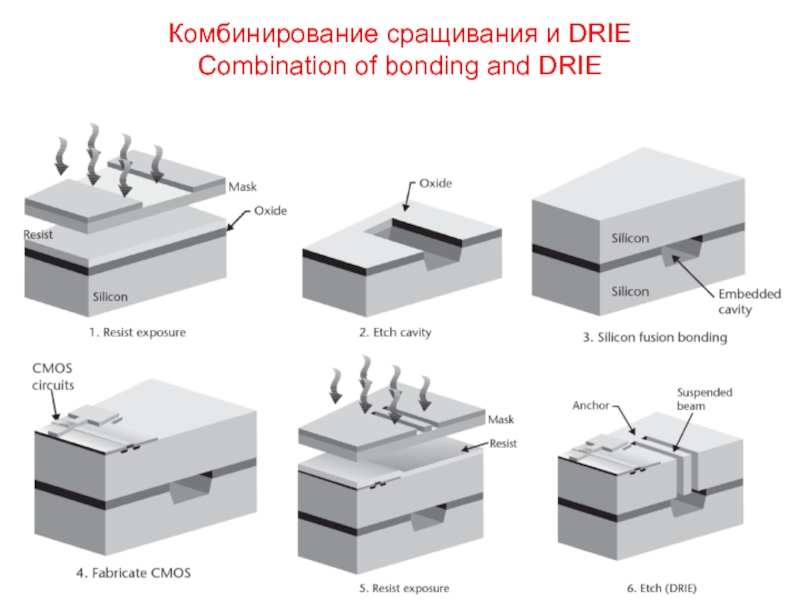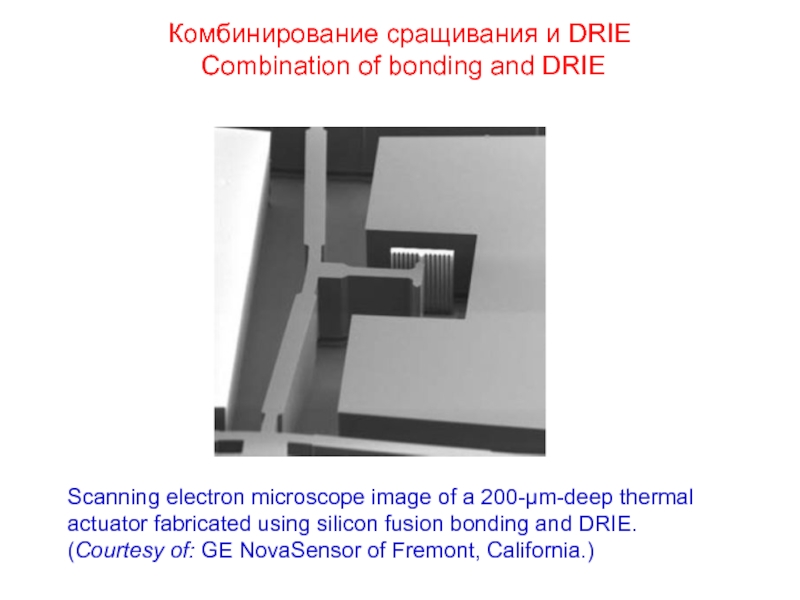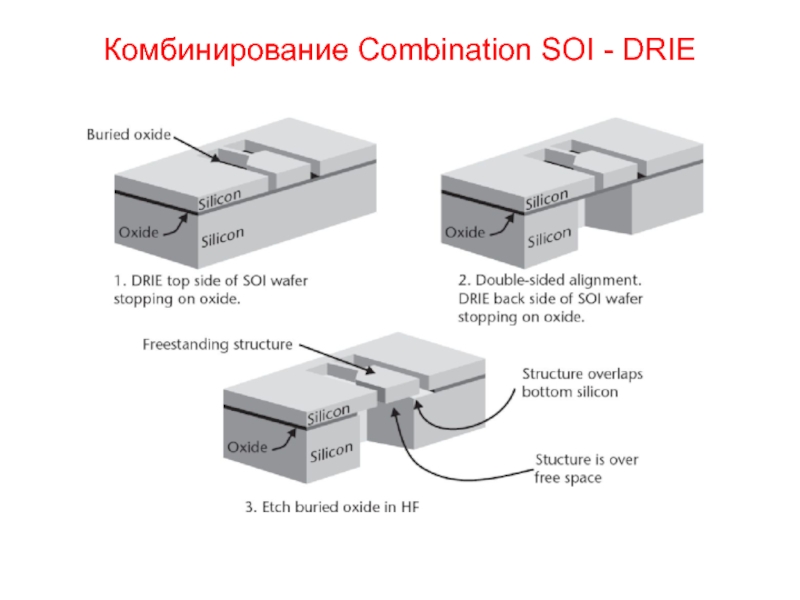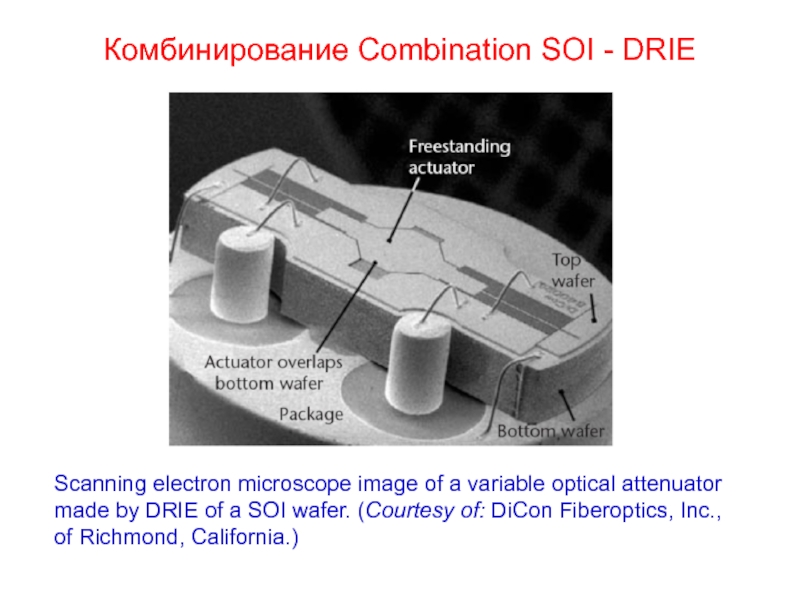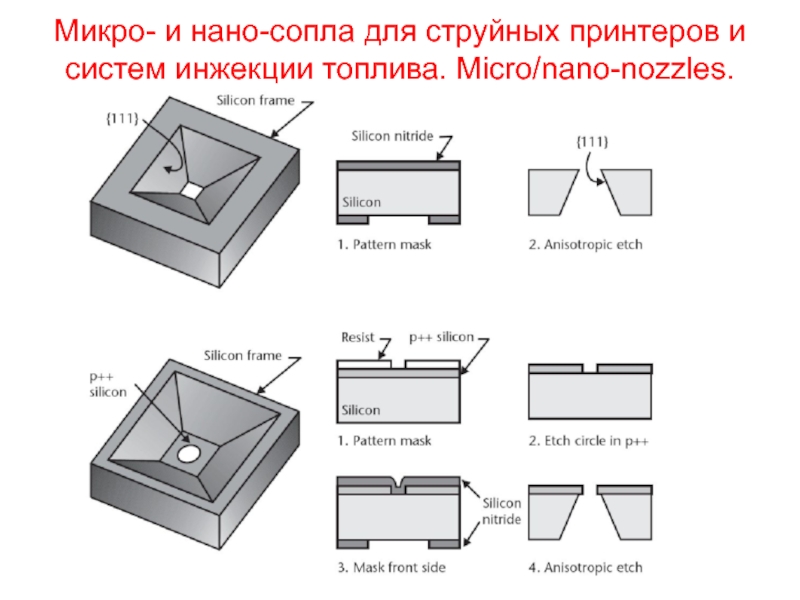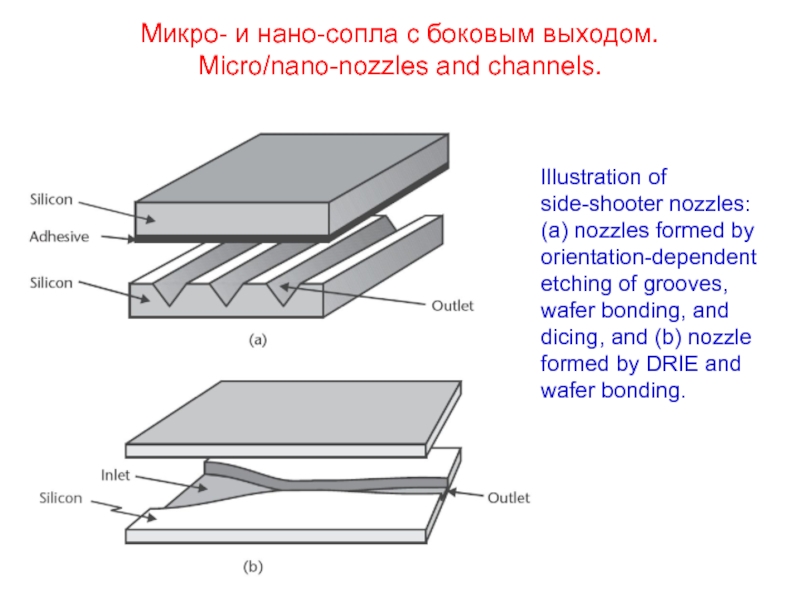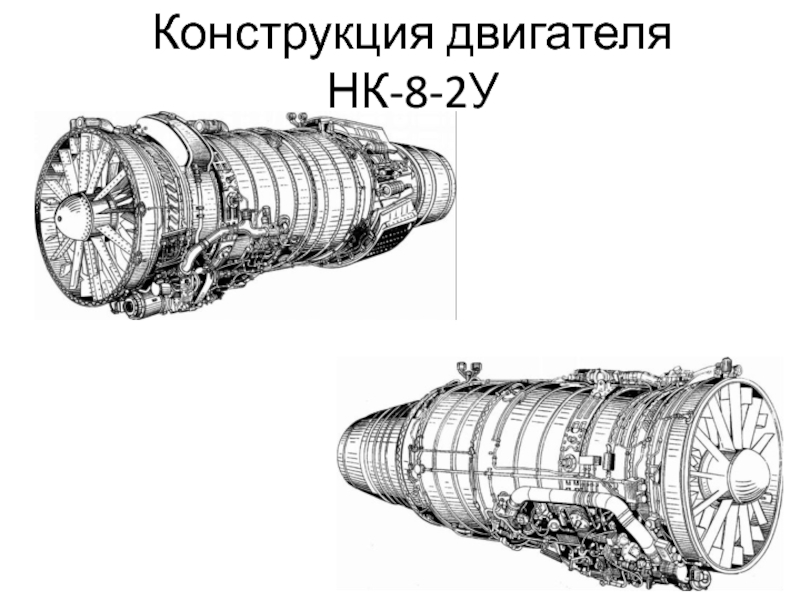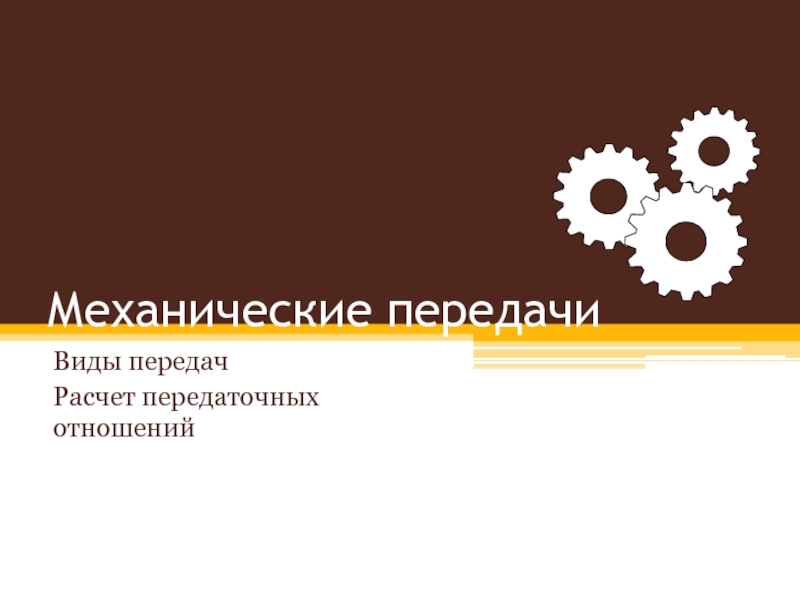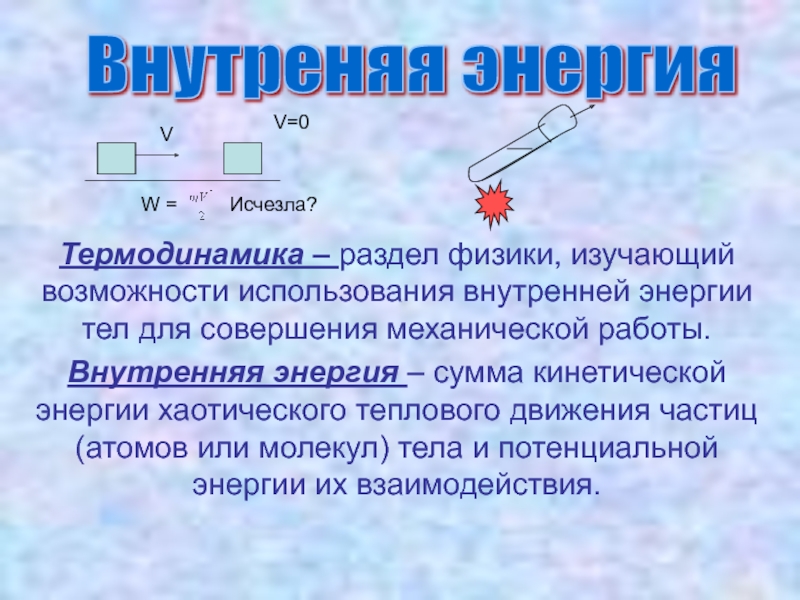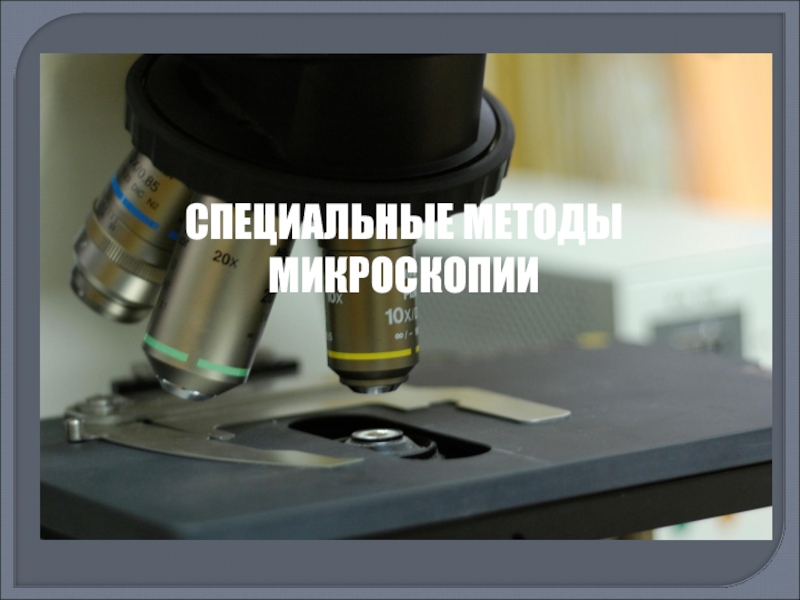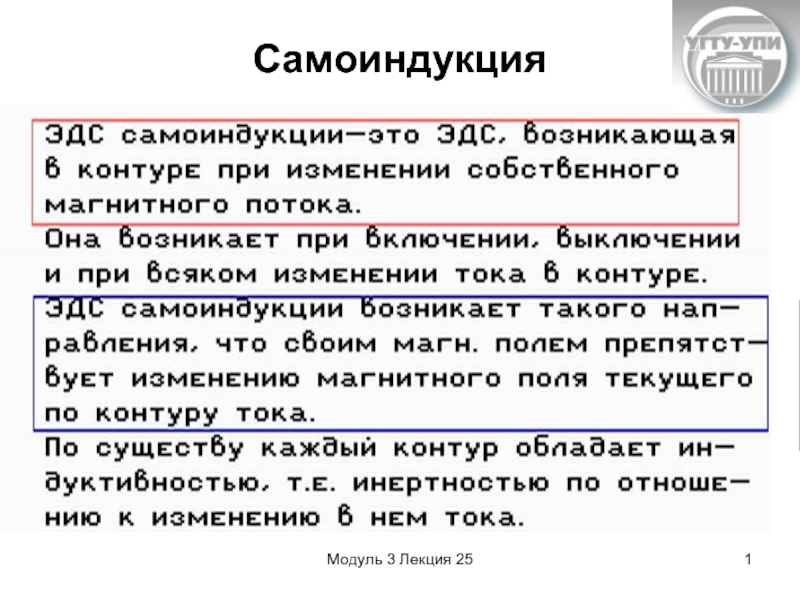- Главная
- Разное
- Дизайн
- Бизнес и предпринимательство
- Аналитика
- Образование
- Развлечения
- Красота и здоровье
- Финансы
- Государство
- Путешествия
- Спорт
- Недвижимость
- Армия
- Графика
- Культурология
- Еда и кулинария
- Лингвистика
- Английский язык
- Астрономия
- Алгебра
- Биология
- География
- Детские презентации
- Информатика
- История
- Литература
- Маркетинг
- Математика
- Медицина
- Менеджмент
- Музыка
- МХК
- Немецкий язык
- ОБЖ
- Обществознание
- Окружающий мир
- Педагогика
- Русский язык
- Технология
- Физика
- Философия
- Химия
- Шаблоны, картинки для презентаций
- Экология
- Экономика
- Юриспруденция
Материалы и технологии изготовления нано- и микро-электромеханических систем НЭМС/МЭМС презентация
Содержание
- 1. Материалы и технологии изготовления нано- и микро-электромеханических систем НЭМС/МЭМС
- 2. Базовый цикл создания НЭМС. Base cycle of NEMS formation.
- 3. Литография Lithography Нанесение резиста
- 4. Травление Etching
- 5. Травление кремния Etching of Si
- 6. Профиль травления Etch profile Schematic illustration of
- 7. Анизотропное травление Anisotropic etching Illustration of the
- 8. Анизотропное травление Anisotropic etching Illustration of the
- 9. Формирование подвешенных нано-балок Suspended nano/micro beams Illustration
- 10. Мембрана над полостью Suspended membrane Scanning-electron micrograph
- 11. Электро-химическое травление Electro-chemical etching Illustration of electrochemical
- 12. Подвешенный островок кремния Suspended Si island A
- 13. DRIE Profile of a DRIE trench using
- 14. Зависимость скорости травления от формы. Aspect-ratio-dependent etching
- 15. DRIE (a) Etch-rate dependence on feature size
- 16. Анодное сращивание. Anodic bonding Illustration of
- 17. Прямое сращивание кремния и поликремния Direct bonding
- 18. Химико-механическая полировка Chemical-mechanical polishing
- 19. Sol-gel deposition Материалы: силикон, оксид титана, алюминий, нитрид кремния и др.
- 20. Лазерная обработка Laser machining Laser machining examples:
- 21. Гальваническое осаждение. Galvanic deposition.
- 22. Ультразвуковая шлифовка. Ultrasonic treatment. Photograph of ultrasonically
- 23. Цикл формирования НЭМС. Example
- 24. Некоторые пары конструкционных и вспомогательных материалов МЭМС.
- 25. Закритическое высушивание. Supercritical drying. Pull-down of a
- 26. Комбинирование сращивания и DRIE Combination of bonding and DRIE
- 27. Комбинирование сращивания и DRIE Combination of
- 28. Комбинирование Combination SOI - DRIE
- 29. Комбинирование Combination SOI - DRIE Scanning electron
- 30. Микро- и нано-сопла для струйных принтеров и систем инжекции топлива. Micro/nano-nozzles.
- 31. Микро- и нано-сопла с боковым выходом.
- 32. Наношарниры Nanohinge Домашнее задание Homework 10 Разработать
Слайд 1Наномеханика
Nanomechanics of materials and systems
Лекция 12
Материалы и технологии изготовления нано-
Слайд 3Литография Lithography
Нанесение резиста
Перенесение изображения маски на резист
Селективное травление резиста и материала
An illustration of proximity and projection lithography. In proximity mode, the mask is within 25 to 50 μm of the resist. Fresnel diffraction limits the resolution and minimum feature size to ~ 5 μm. In projection mode, complex optics image the mask onto the resist. The resolution is routinely better than one micrometer. Subsequent development delineates the features in the resist.
Слайд 6Профиль травления Etch profile
Schematic illustration of cross-sectional trench profiles resulting from
Слайд 7Анизотропное травление Anisotropic etching
Illustration of the anisotropic etching of cavities in
(a)
(b)
Слайд 8Анизотропное травление Anisotropic etching
Illustration of the anisotropic etching in {110}-oriented silicon.
Слайд 9Формирование подвешенных нано-балок
Suspended nano/micro beams
Illustration of the etching at convex corners
Слайд 10Мембрана над полостью Suspended membrane
Scanning-electron micrograph of a thermally isolated RMS
Слайд 11Электро-химическое травление Electro-chemical etching
Illustration of electrochemical etching using n-type epitaxial silicon.
Слайд 12Подвешенный островок кремния Suspended Si island
A fully suspended n-type crystalline silicon
{111}
n – стоп- слой
100 мкм
Слайд 13DRIE
Profile of a DRIE trench using the Bosch process. The process
Характеристики процесса травления DRIE
Слайд 14Зависимость скорости травления от формы.
Aspect-ratio-dependent etching in DRIE.
The etch rate
Слайд 15DRIE
(a) Etch-rate dependence on feature size and aspect ratio for a
(a)
(b)
(c)
Слайд 16Анодное сращивание. Anodic bonding
Illustration of anodic bonding between glass and
V = 0.5-1.5 kV
T = 200-500 °C
Слайд 17Прямое сращивание кремния и поликремния
Direct bonding of Si
Требования к исходным пластинам
Шероховатость не более Roughness < 0.5 nm
Отклонение от плоскости поверхности не более deviation out of plane < 5 μm over 100 mm
Отсутствие химических загрязнений на поверхности Chemically clean
Основные этапы процесса сращивания Steps:
Химическая очистка поверхности и формирование на ней гидроксильных групп. Chemical cleaning, hydroxyl coverage.
Приведение сращиваемых поверхностей в контакт и соединение за счет сил Ван-дер-Вальса.
Contacting and Van-der-Waals bonding.
Отжиг при 800-1100 °С и формирование связей по реакции.
Annealing and bonding in accord to the chemical reaction
Слайд 20Лазерная обработка Laser machining
Laser machining examples: (a) microlenses in polycarbonate; and
Слайд 22Ультразвуковая шлифовка. Ultrasonic treatment.
Photograph of ultrasonically drilled holes and cavities in
(Courtesy of: Bullen Ultrasonics, Inc., of Eaton, Ohio.)
Частота:
20-100 кГц
Растворители:
вода, масло
Абразивы:
BC, Al2O3, SiC
Размер отверстий
150 мкм – 100 мм
Слайд 24Некоторые пары конструкционных и вспомогательных материалов МЭМС. Structural and sacrificial materials.
Травитель
PSG – стекло SiO2:P
Слайд 25Закритическое высушивание. Supercritical drying.
Pull-down of a compliant freestanding structure (a cantilever)
Цикл сушки:
1. Помещение в метанол, удаление воды
2. Закачка жидкого CO2 под давлением, замещение метанола
3. Нагрев и переход в закритическую область
4. Снижение давления, удаление CO2 газа
Слайд 27Комбинирование сращивания и DRIE
Combination of bonding and DRIE
Scanning electron microscope
Слайд 29Комбинирование Combination SOI - DRIE
Scanning electron microscope image of a variable
Слайд 31Микро- и нано-сопла с боковым выходом.
Micro/nano-nozzles and channels.
Illustration of side-shooter
etching of grooves, wafer bonding, and dicing, and (b) nozzle formed by DRIE and wafer bonding.
